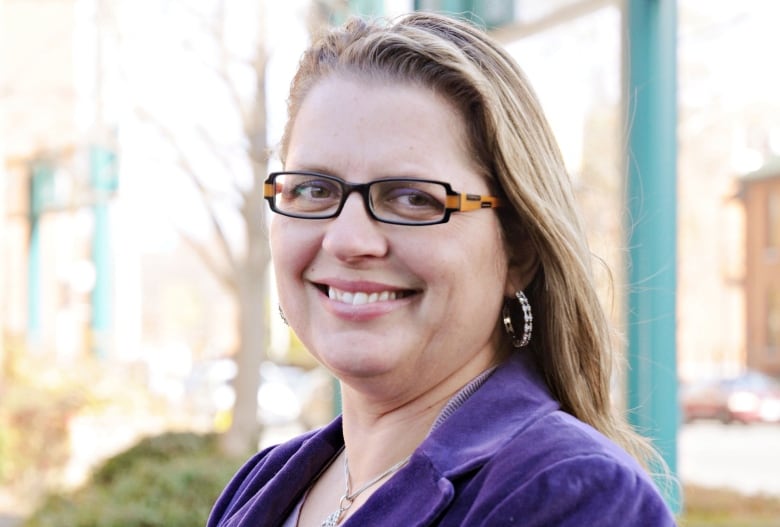Long waits for COVID-19 test results reveal Canada’s shortage of lab workers
Long waits for COVID-19 test results are due in part to a shortage of medical laboratory professionals in Canada, according to lab workers’ associations and job vacancy data.
Laboratory logjams that were already the norm have been exacerbated by the pandemic along with a pipeline problem, with more leaving the profession than joining.
Christine Nielson, CEO of the Canadian Society for Medical Laboratory Science in Hamilton, said her organization has spent the past 12 to 15 years advocating with federal and provincial governments for ways to bolster their ranks.
The number of new graduates isn’t enough to keep pace with people retiring from the industry, said Nielson.
“We also know that in the next five years, 50 per cent of our workforce is eligible for retirement,” she said.
The problem is worse in rural and remote areas.

Christine Bruce, administrative director for the department of microbiology at the University Health Network and Sinai Health Systems laboratory in Toronto, is overseeing a lab processing 800 COVID-19 tests daily. Plans are in place to ramp that up to 1,200, she said.
These days, she and her staff are suited up in protective gear and working in what she describes as an “all hands on deck” situation. But she says the “scarce supply” of laboratory staff is a concern not just during the pandemic but for everyday operations at Canada’s medical labs.
In Ontario alone, there are 500,000 medical tests performed every day — even before coronavirus gets thrown in the mix.

“And so here we are in a situation where we have a significant need to draw on lab professionals and the pool is just not there.”
Labour economists say the shortage of laboratory workers is in keeping with a dearth of employees in numerous medical fields.
Keeping up with an aging population
“We’ve seen over the past few years significant increases in job openings for roles like nurses and other professional health occupations,” said Brendon Bernard, economist with job site Indeed Canada. “These all are in strong demand in the Canadian economy right now.”
One of the driving factors, he says, is an aging Canadian population creating more demand for health services.
Looking just at the activity on Indeed, Bernard said the portion of all job postings accounted for by laboratory positions increased 58 per cent between March 2018 and March 2020.
“Their share of Canadian job posts is up 13 per cent since the start of March, as employer hiring intentions in the field have held steadier than the overall economy.”
Labour economist Steven Tobin, executive director of the Labour Market Information Council in Ottawa, said a good way to identify labour shortages is to look at fields where positions stay vacant for months at a time using a source of information like Statistics Canada’s Job Vacancy and Wage Survey.
“If we look at the trend in the past three years for the [laboratory] occupations in question, we can see that the share of vacancies that have persisted for at least 90 days is significantly higher than the average for all vacancies, and has trended up compared to the same quarter in 2018.”
There were 845 vacancies among laboratory technologists, technicians and pathologist assistants in the third quarter of 2019, the most recent period for which data are available.
Not enough funds to expand training
The problem isn’t lack of interest in the field. In fact, Nielson said most college and university programs are over-subscribed; at least one has a six-year wait list. Funding to expand seats in those programs hasn’t been increased to keep up.
It’s highly technical — and therefore expensive — to train lab scientists, and can cost provinces up to $100,000 to make a new spot available, said Nielson.
Michelle Hoad, CEO of the Medical Laboratory Professionals Association of Ontario, said there are currently five medical lab programs in Ontario and all are full to capacity.
Seven other programs were cut in the province in the mid-1990s.
As a result, the number of people looking to retire exceeds those who are entering the field, leaving labs shorthanded in a time of crisis.
“That workforce right now is understaffed and overworked, and it is truly commendable that they are coming in every day and doing the best they can,” she said.
Rural areas have it worst
In B.C., it’s the same story, said Malcolm Ashford, executive director of the British Columbia Society of Laboratory Sciences.
Places that are off the beaten path have the most acute worker shortages.
“The Vancouver Island Health Authority indicated that they probably had 10, 11, 12 positions open they have not been able to fill simply because of a shortage of medical laboratory technicians and medical laboratory assistants to go around.”
While increasing spots in post-secondary programs would help, another challenge is a dearth of practicum placements for students, he said, which thinly stretched labs struggle to facilitate.
“When they’re understaffed they don’t have the ability and the time to spend with students.”
Making the pandemic staff crunch even tougher, schools and hospitals have cancelled this spring’s practicum placements because they don’t want to put students at risk, said Ashford, who is based in Kelowna.
‘Proud to participate behind the scenes’
Experienced lab staff are accustomed to safety procedures and have been trained to handle possible outbreaks of much more deadly diseases, including Ebola, said Marie-France Jemus, regional manager at the Eastern Ontario Regional Laboratory Association in Ottawa.
She is overseeing COVID-19 testing for the area out of a lab based at CHEO, formerly known as the Children’s Hospital of Eastern Ontario.
“It is a pandemic and our families are all kind of hoping we stay nice and safe, but for us in the lab, we do feel that we are safe here.
“We are part of the health care team and we’re very proud to participate behind the scenes.”
Making better use of people educated abroad
One solution could be to streamline the process for new Canadians who were trained abroad in medical laboratory science to begin to practice here, said Nielson. Currently, foreign-trained laboratory professions face steep barriers to getting certified to work in Canada.
In the interim, it would also help if policy-makers provided funds to purchase additional equipment so that technicians in the COVID labs can process more tests at a time, she said.
To help cope with the crisis, some workers are even coming out of retirement, including on Bruce’s team at Mt. Sinai.
“Once you’re a lab person, it’s really in your blood,” says Bruce. “As much as it’s a really challenging time … it’ s actually an exciting time to be a laboratorian, because so much of this crisis depends on what the laboratory does. It’s really quite exciting to be part of it.”
CBC








Redes Sociais - Comentários